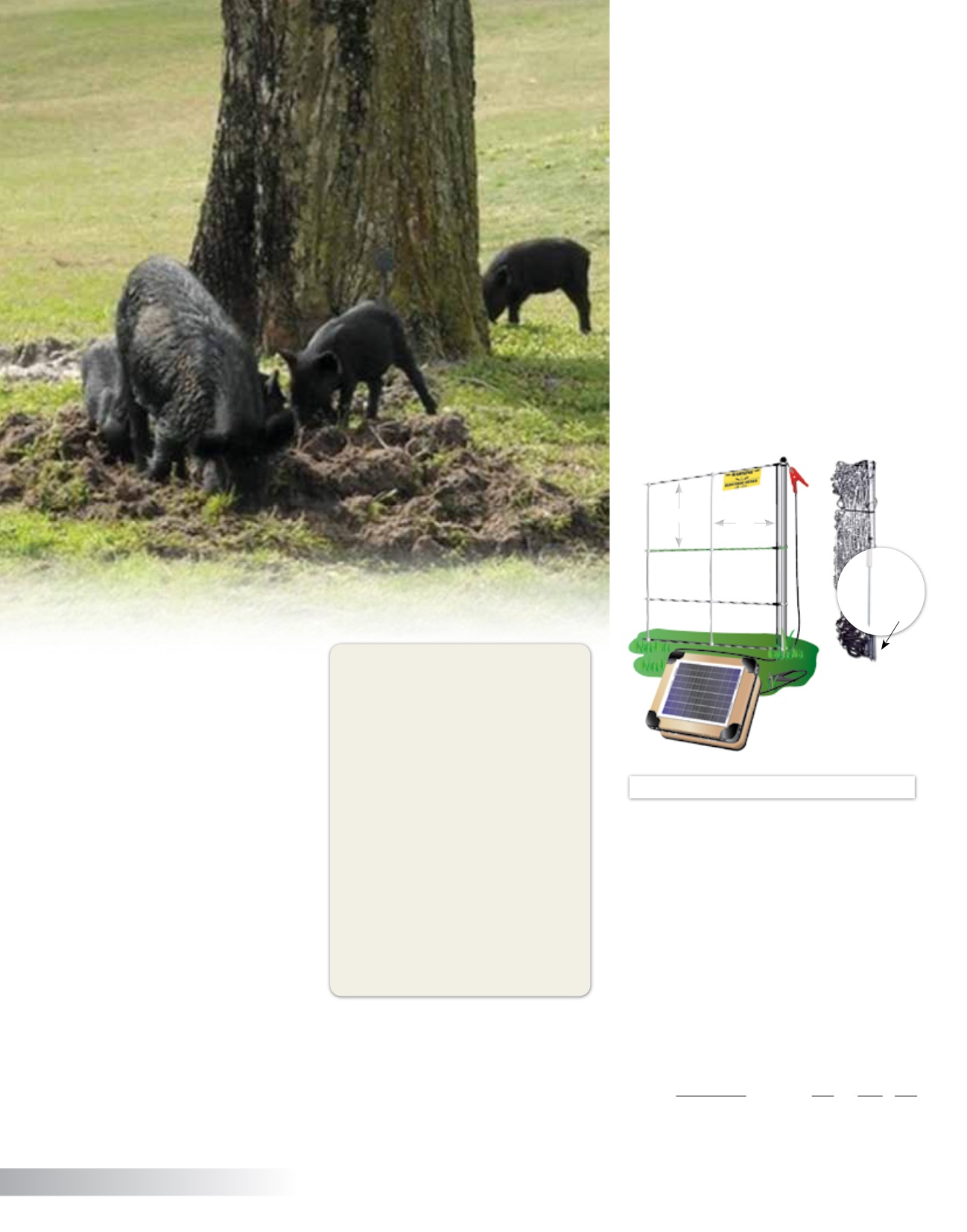
60 HOGNET FENCES
www.premier1supplies.com• 1-800-282-6631
18"
12.5 ft between posts, built-in.
Struts every
12"
8"
6"
4"
(SS) =
Single
Spike
Posts
SS
=Single
spike post
HogNet 4/18/12 • 4 horizontal strands. • 18" tall. • Vertical struts every 12". • Posts (built-in) every 12.5', .5" dia. • Post spikes (SS) .26" dia, 6" long. Recommended for areas that experience consistent rainfall and have green grass. 100' x 18" (SS), 4.60 lb.........................#208076 $62.00 50' x 18" (SS), 2.40 lb...........................#208075 $54.00Energizers & recommended accessories
Product Name
Item Price Pg #
Battery, Plug-in or Solar Energizers.....................................79
5-Light Tester, 0.24 lb...................... #134100 $11.50 103
Warning Sign, 0.06 lb...................... #346000 $0.97 137
FiberTuff Post 18", 0.75 lb................#208050 $2.97 123
(above) An increasingly common sight as the feral hog population continues to multiply.
HogNet ™ 4/18/12Semi-Permanent
To purchas
e HogNet 4/18/12…1. Measure the fence line.
2. Choose the length and the amount
of netting needed.
Example: A 125 ft
fence requires one 100 ft net and one
50 ft net.
3. Choose support posts—
As needed for ends, curves and corners
(see pp. 121-127)
.
4. Select an energizer, ground rod and
a fence tester
(pp. 79–103)
details plug-
in, battery and solar fence energizers.
Cost: as low as 62¢ per ft
Learn netting (types/posts/spikes), pp. 10-12, 104-115
Hogs
As those who live in hog country
know too well, their population is
steadily growing and expanding.
Regrettably, they are as smart as they
are aggressive and destructive. That’s
why physical barrier fences often fail.
It’s been proven that electrified
fences work—and work well to deter
wild hogs. Why? Because hogs use
their moist snout to test and investigate
new situations.
This ensures that contact with an
energized strand will send a hog-
stopping shock (if the energizer is large
enough) through the hog.
Hogs have very good memories. So
they aren’t likely to test the same fence
in the same place twice—if the pulse
was painful the first time.
Choices…
1
. HogNet 4/18/12A net with only 3 electrified
horizontal strands. Bottom (4th)
strand rests on the ground. Best
for sites with green grass and
moist soil. Least effort to install.
2
. HogNet 10/24/12For moist and dry areas. Can
be switched to Pos/Neg for
sites with dry soils. Most
expensive choice.
3. Multi-Strand
2 to 3 strands of energized
rope
(see p. 58)
. Least expensive
choice. Install posts and insert
rope in the posts. This is the
least effective.
Notes…
• Netting is more effective than multi-strand fences because it is more visible.
• HogNet 10/24/12 can be set up as a Positive/Negative fence—much better for
dry soil conditions.
• The extra strands ensure the animal is shocked
before
it sticks its nose through
the fence. This reduces the risk of the shocked animal charging forward.
• HogNet 4/18/12 will work well if the area is wet throughout the year. Its lower
cost/ft makes it a good choice for longer fences.









